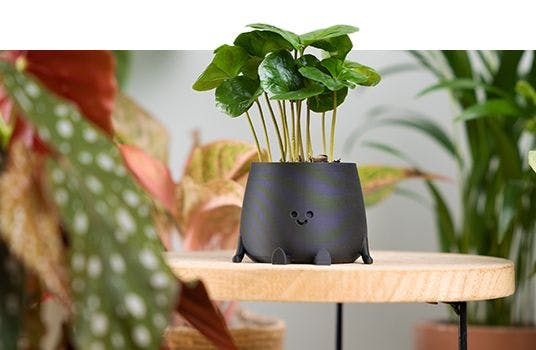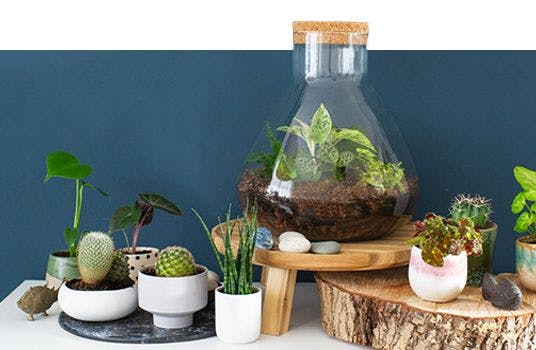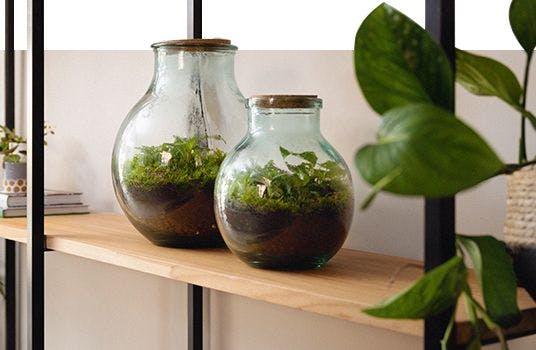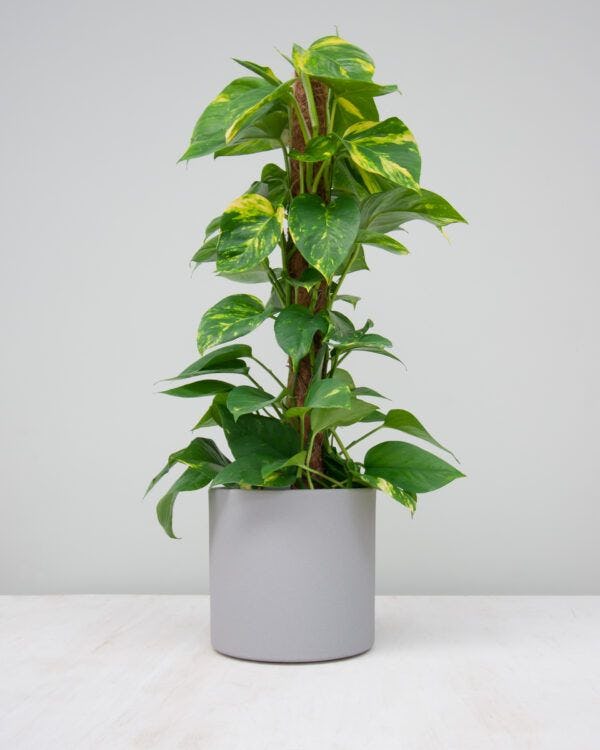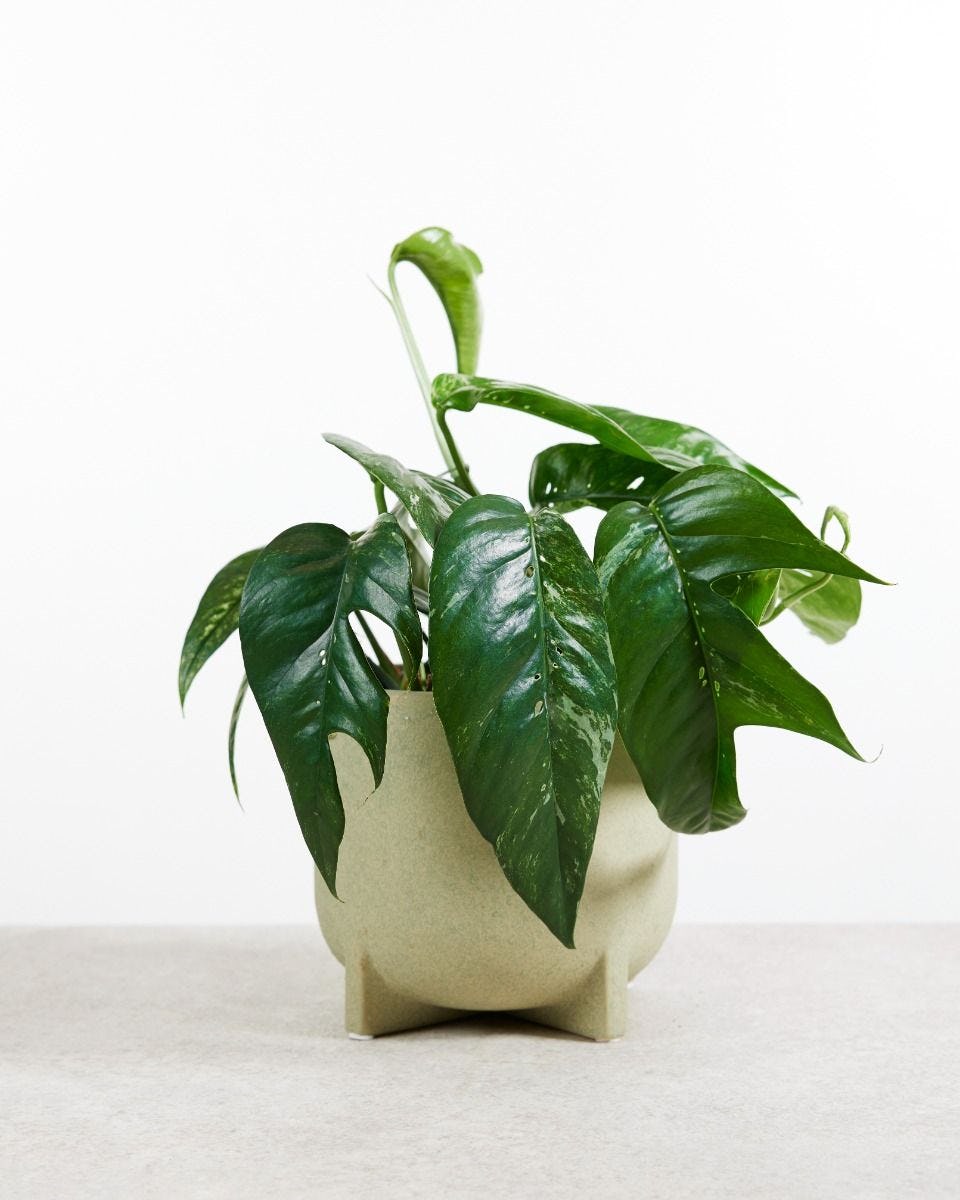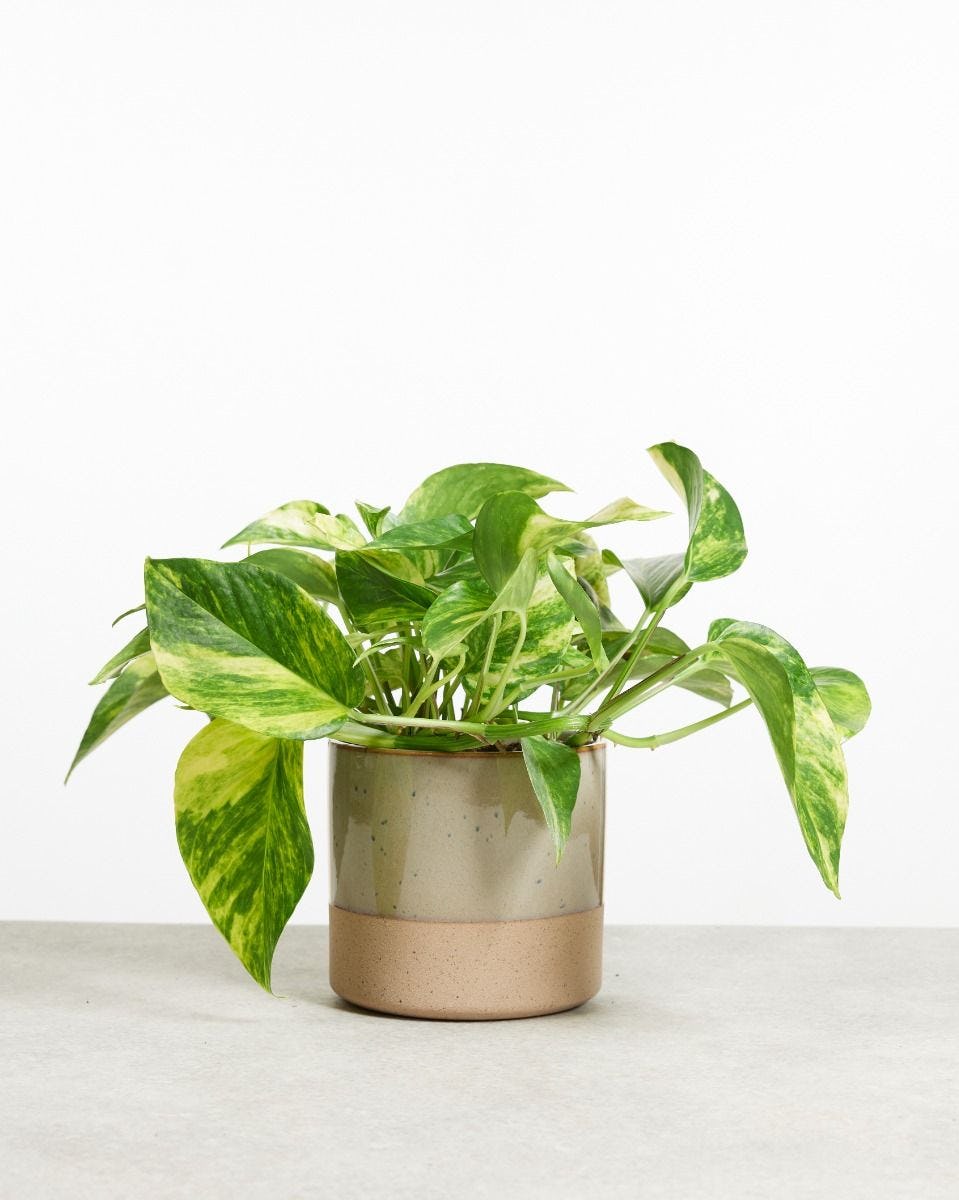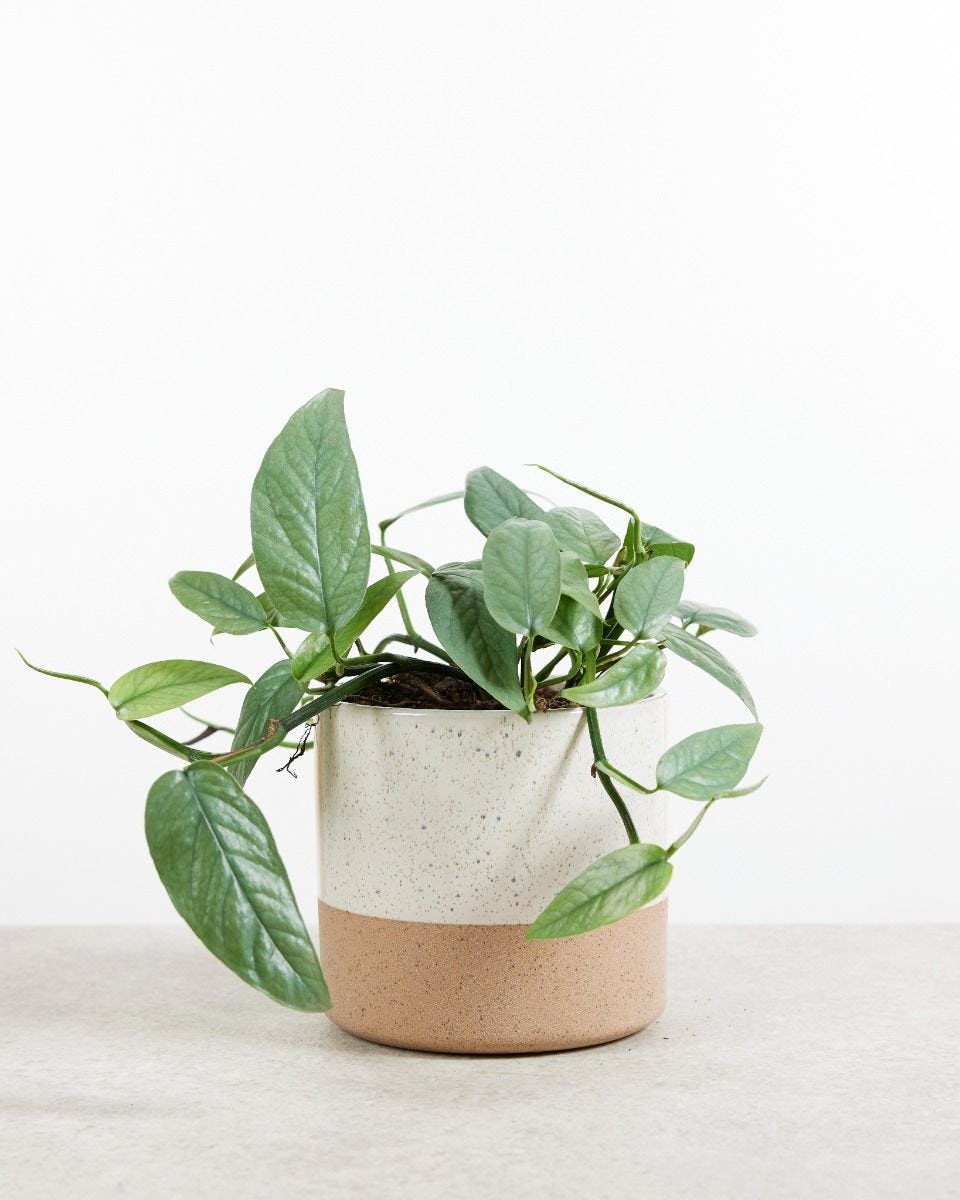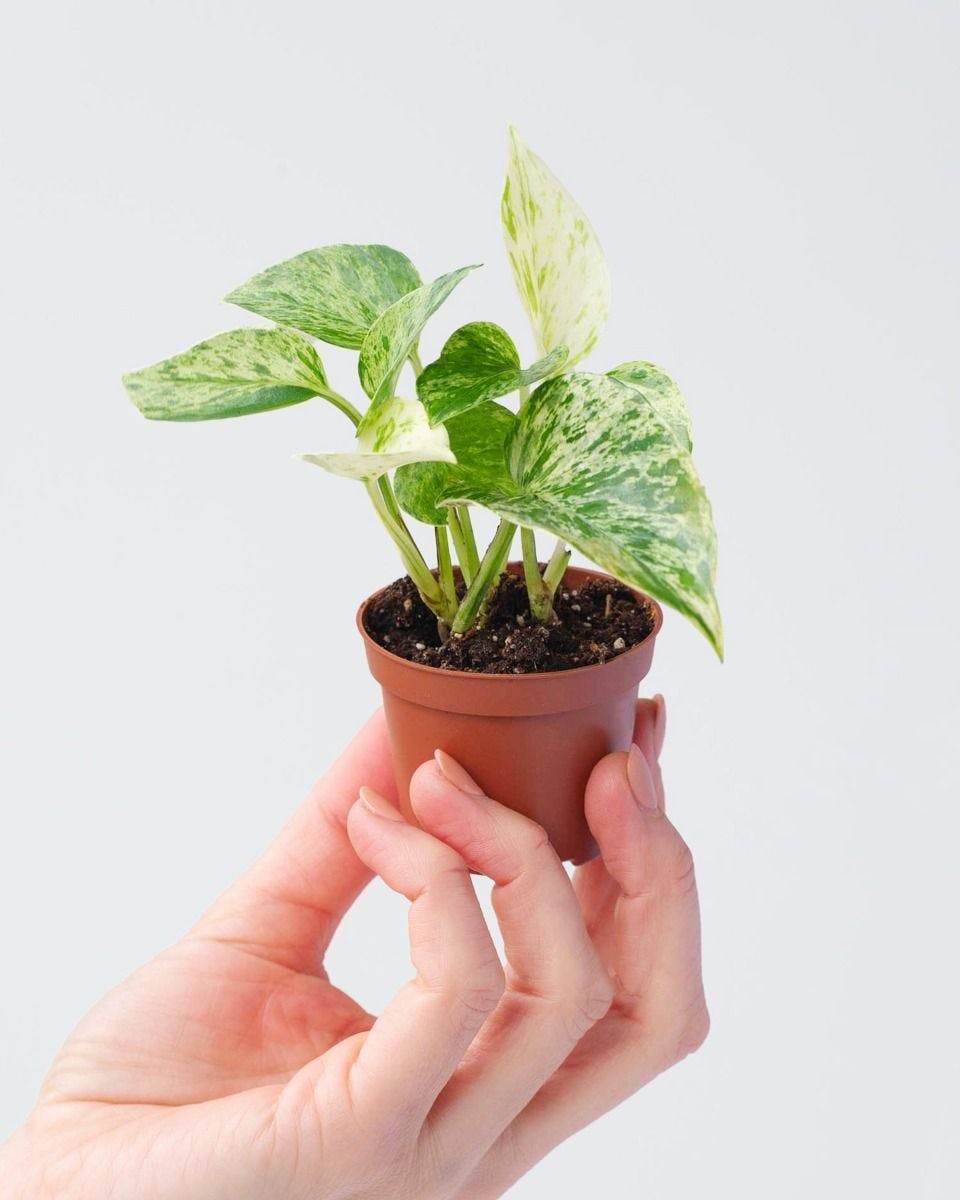
Epipremnum (Devil’s Ivy) - Expert tips
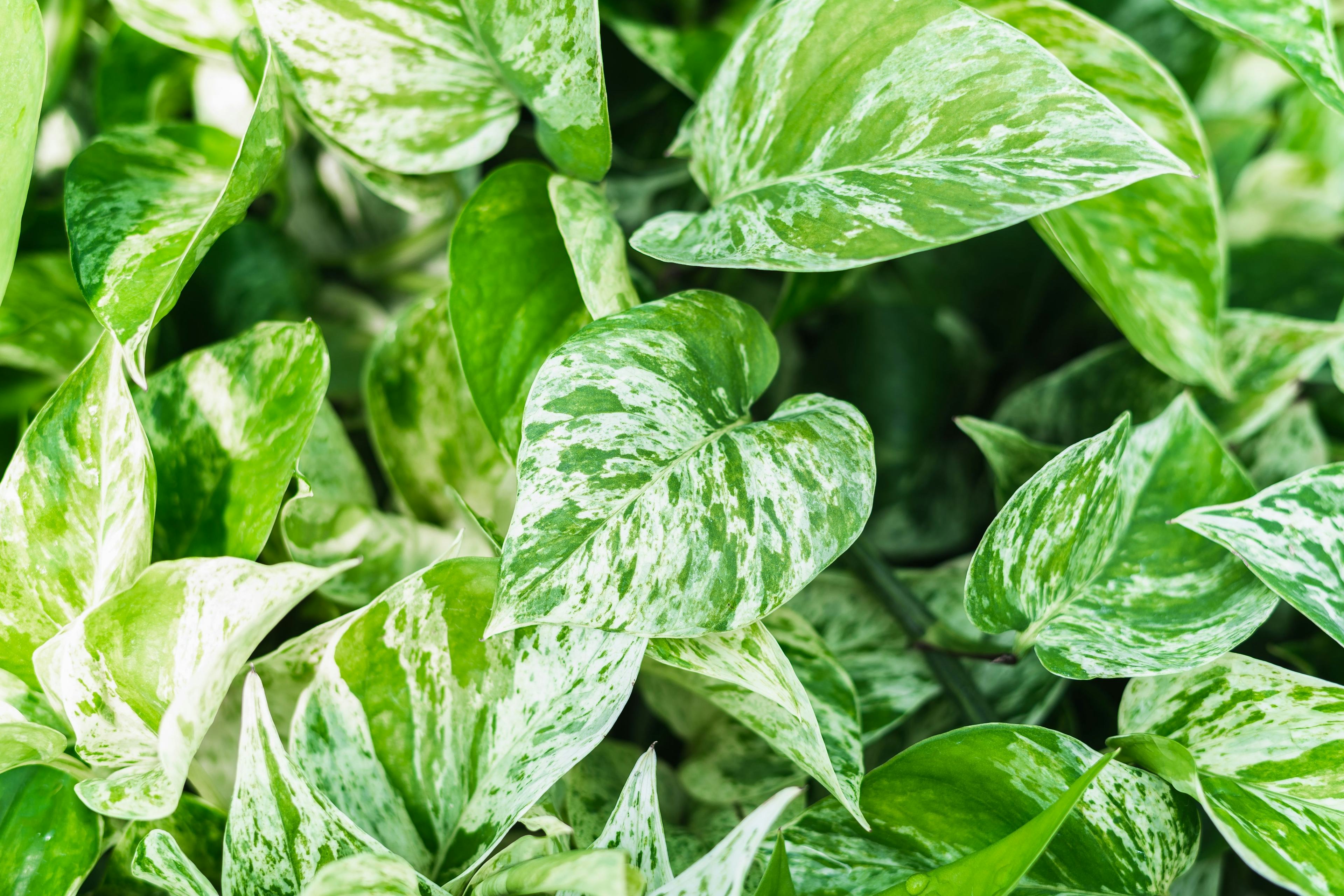
In this article
- 1 How to Care for Epipremnum (Devil’s Ivy) - Expert Tips for Thriving Plants
- 1.1 Pothos Care: 10 expert tips for growing it successfully
- 1.1.1 Light requirements
- 1.1.2 Watering
- 1.1.3 Fertilisation
- 1.1.4 Temperature & humidity
- 1.1.5 Repotting and soil
- 1.1.6 Devil's Ivy propagation
- 1.2 Most common pest and disease on Pothos
- 1.3 Is Pothos toxic for pets or children?
- 1.4 Buy your new Pothos online at PLNTS.com
How to Care for Epipremnum (Devil’s Ivy) - Expert Tips for Thriving Plants
Epipremnum plants are really popular houseplants all over the world. This plant is loved by plant parents for its large, lush leaves and for its ease of care. And the best thing? It will be a great addition to any home since it can handle low light levels and dry air.
Epipremnum plants are commonly known under the "Pothos" name. Some people also call it "Devil's Ivy" because it's so hard to kill. It comes from tropical regions, particularly Southeast Asia, and grows in tropical forests where it's warm and humid. It's part of the Araceae family, which is often called the Aroid or Arum family. It's a big family with lots of different plants in it!
Good to know! While many people refer to Scindapsus plants as "Pothos" or even "Devil's Ivy", they are actually two separate genera. They look very similar, which is why they are often confused with one another.

Pothos Care: 10 expert tips for growing it successfully
- It prefers lots of natural light but can also live in medium shade. Just remember, it will have much smaller leaves and less variegation if it's in a shadier spot.
- Be careful not to overwater. Wait until the soil has slightly dried out before watering again. It's usually safer to wait a bit longer if you are unsure whether your plant needs water. They are quite drought-tolerant.
- Whenever it's thirsty, it'll droop its leaves. Just water it right away, and you will see it will return to its old self within a day.
- If you see brown leaf edges, it's probably because of low humidity. To increase humidity around the plant, try using a humidifier, misting it with water, or putting it in a pebble tray filled with water.
- You can also try putting it in the bathroom. Due to the natural humidity from the shower, Devil's Ivy will love the conditions in the bathroom.
- Give it a place to hang or support for climbing. Devil's Ivy naturally climbs trees in the wild. You can mimic this in your home with a moss pole or other support structure or let it hang freely from a shelf.
- Make sure you prune it regularly to keep its shape under control. Pruning Devil's Ivy encourages bushier growth and keeps it from getting too leggy and sparse.
- Keep an eye out for yellow leaves. Yellow leaves may indicate too much water or a dark location for your Pothos.
- Stay calm if growth slows or stops in winter or drop some yellow leaves. This is perfectly normal, and the plant should pick up growth again in the spring.
- Keep an eye out for pests. Common pests like spider mites and mealybugs can infest your plant. Regularly check the undersides of leaves and take action at the first sign of infestation.
Pothos Care Tips
Light requirements
Give your Pothos lots of natural light to see its foliage at its full potential. It will also tolerate medium shade, but its leaves will be much smaller and less variegated. You can place the plant in various locations like a bookshelf, hanging basket, or on a tall piece of furniture where the vines can cascade beautifully. If you want it to climb, place it near support like a sphagnum moss pole.
Expert tip! If it doesn't get enough light, it will have smaller leaves, slower growth, and less variegated leaves. You can move it to a brighter spot or leave it where it is if you don't mind how it looks. It will still be a pretty plant!
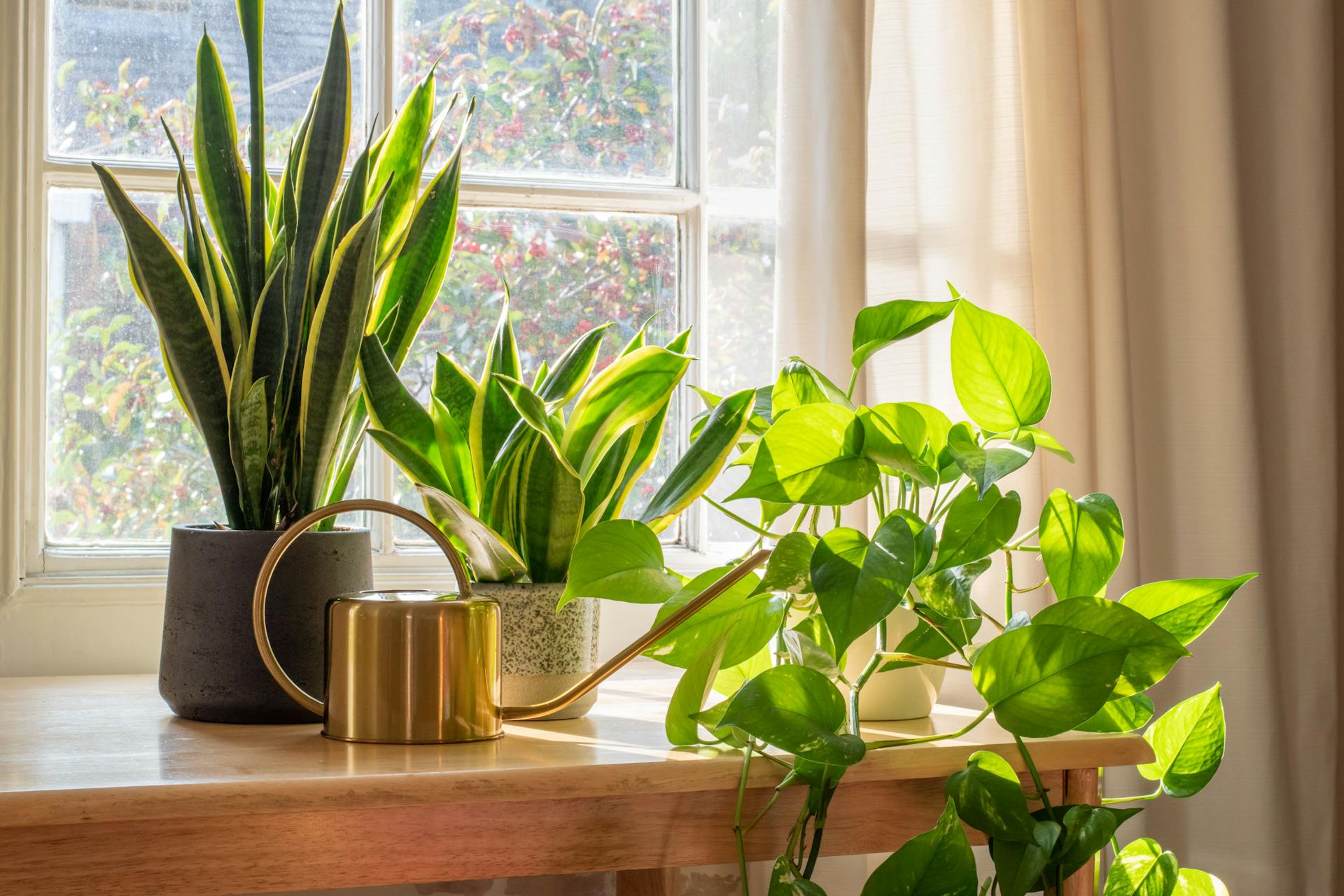
Watering
Water your Devil's Ivy when the top half of the soil feels dry to the touch. The frequency of watering depends on the conditions of your home, but usually, once a week is needed.
Expert tip! Pothos plants will droop really quickly and dramatically when they are thirsty. So, if you see those leaves starting to hang, go ahead and give them some water. You'll see it perk right back up in no time at all!
Avoid overwatering it, as it can cause lots of trouble - we're talking about root rot. If you start to see yellow leaves or brown spots, your plant might tell you it's had too much water.
Fertilisation
Your Devils Ivy will benefit from regular fertilisation from spring to summer. You can feed it with some organic fertiliser like PLNTS nutrition every 3-4 weeks. Take a break from feeding during the fall and winter. It's when most plants prefer to snooze and don't need extra nutrients.
Temperature & humidity
Pothos plants are pretty chill regarding temperature - they like it to be between 15-25°C, which is average room temperature. While they will live happily in average room humidity, they will thrive in 40-60% humidity. You might want to raise the humidity for plants if you see any brown leaf edges.
Repotting and soil
Usually, Pothos plants need to be repotted every 2 to 3 years or when their roots have grown out of their current pot. If you repot them, use PLNTS aroid potting mix that drains well and is rich in nutrients. Your Pothos will love it!
Devil's Ivy propagation
Propagating Devil's Ivy is easy, and you can do it any time of year. Just snip off a bit of vine right under a node. Then, let that little cutting hang out in a glass of water and wait for the roots to sprout. Once you see a good bunch of roots, you can move it to a pot with well-draining soil. You'll have a new plant to love in no time, Pothos is really a fast grower!
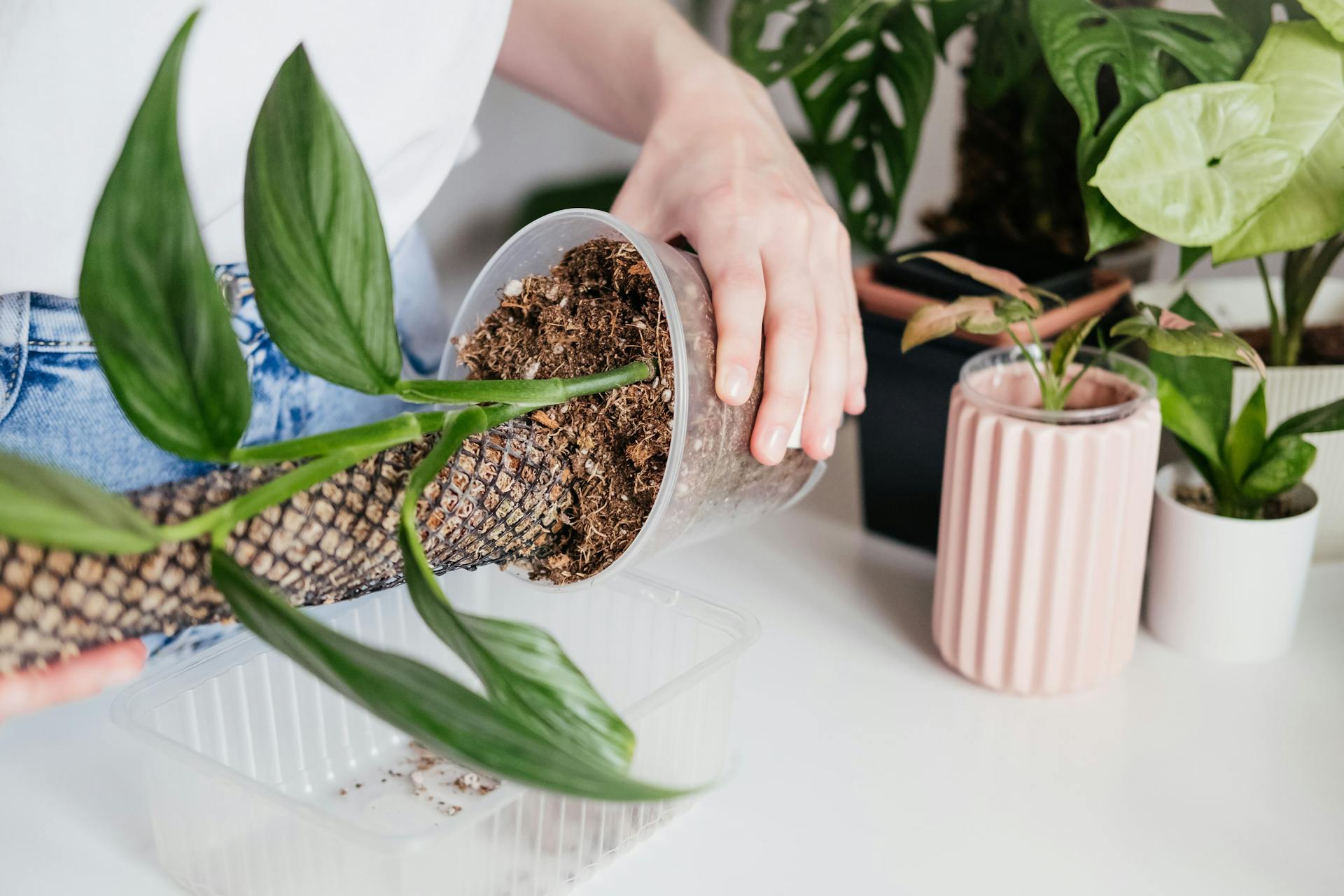
Most common pest and disease on Pothos
Pothos plants are susceptible to root rot, so keep your soil rather dry and always use pots with drainage whole that allow excess water to escape. Regarding pests, scale insects and spider mites often bother Epipremnum plants. It's just a matter of keeping the air humidity higher and cleaning its leaves regularly since these pests prefer drier and dusty environments.
Do you suspect that your plant has some uninvited visitors? Check our PLNTSdoctor page to know how to get rid of these pests.
Is Pothos toxic for pets or children?
Sadly, Pothos plants are toxic to dogs, cats, and humans, causing swelling in the mouth and throat. Put your Pothos away from reach to ensure everyone's safety while admiring their beauty.
Buy your new Pothos online at PLNTS.com
At PLNTS.com you can buy Epipremnum online, like the famous Epipremnum Marble Queen or Epiprepmnum Cebu Blue. Whether you like your Epipremnum big from the start or prefer to grow them from tiny BabyPLNTS into full-grown PLNTS - buy your new Epipremnum online at PLNTS.com.

Free shipping from €75,-
We ship our plants all over Europe!
30 day health guarantee
For all our happy plants. Read more about our guarantees.
- Delivery throughout Europe
- Free shipping for orders over €75,-
- 30 day PLNTS health guarantee


